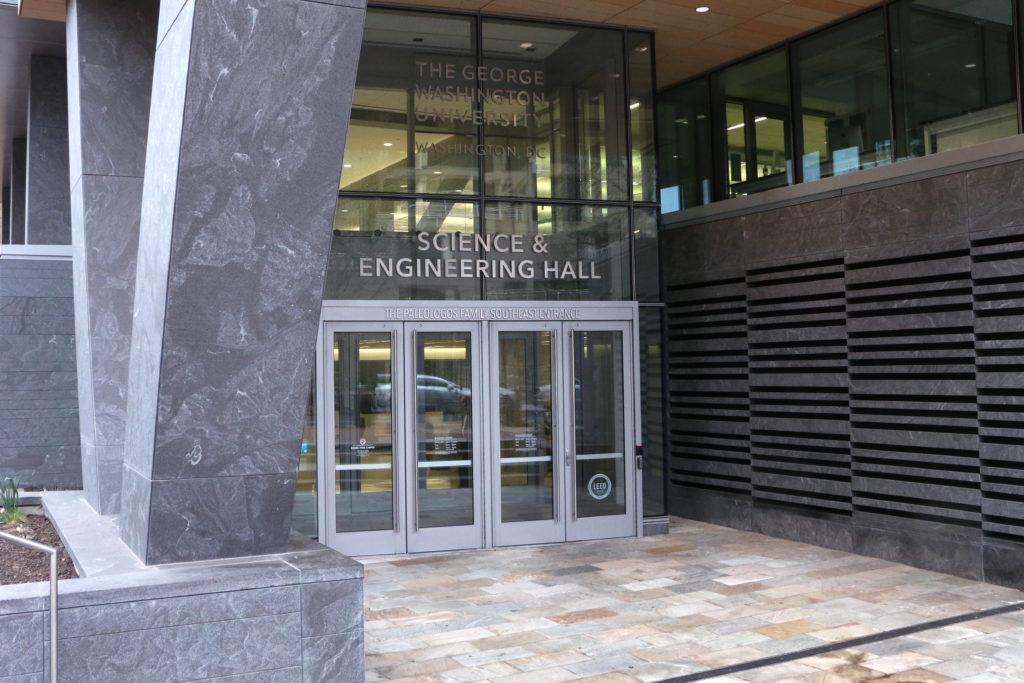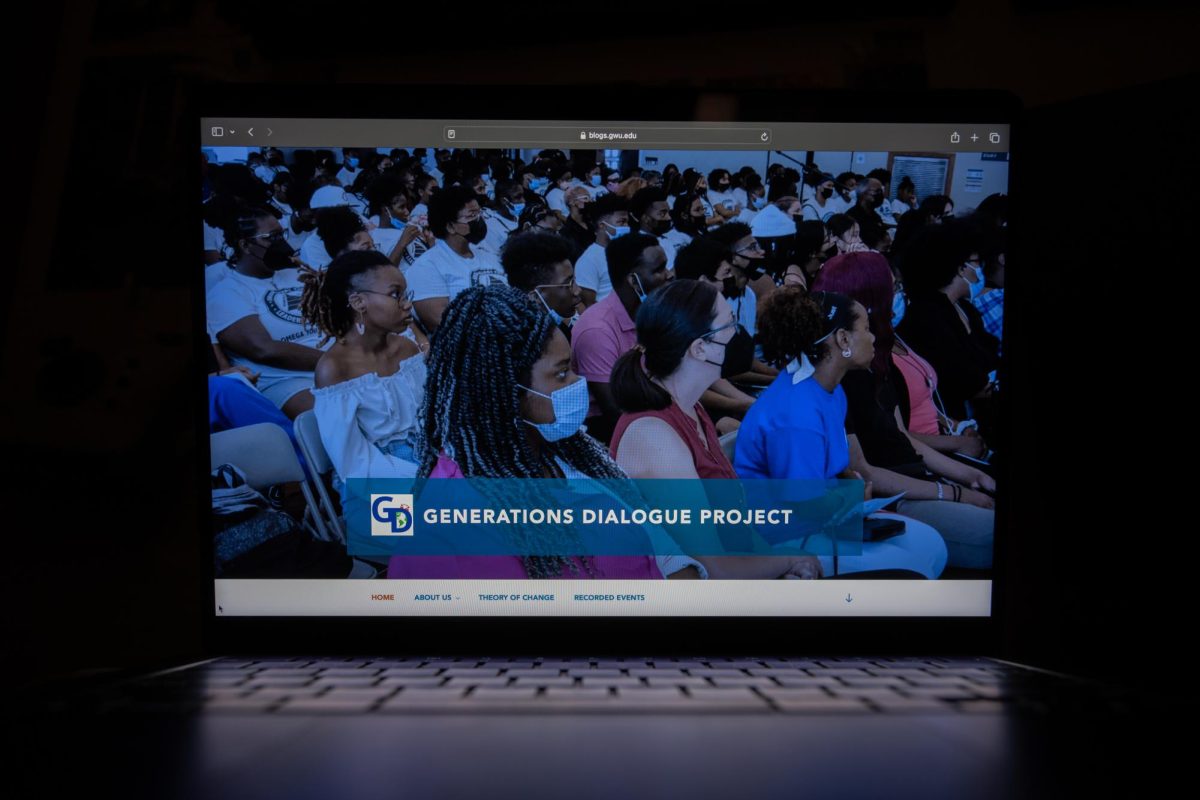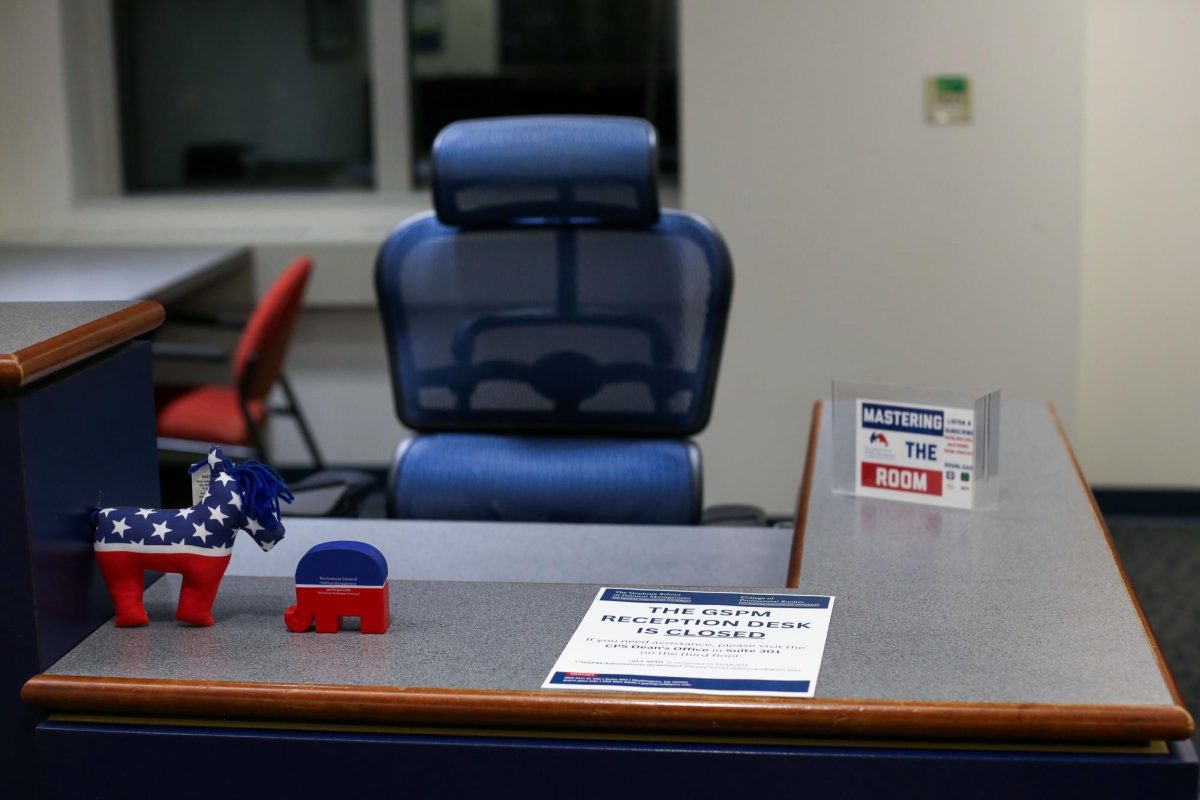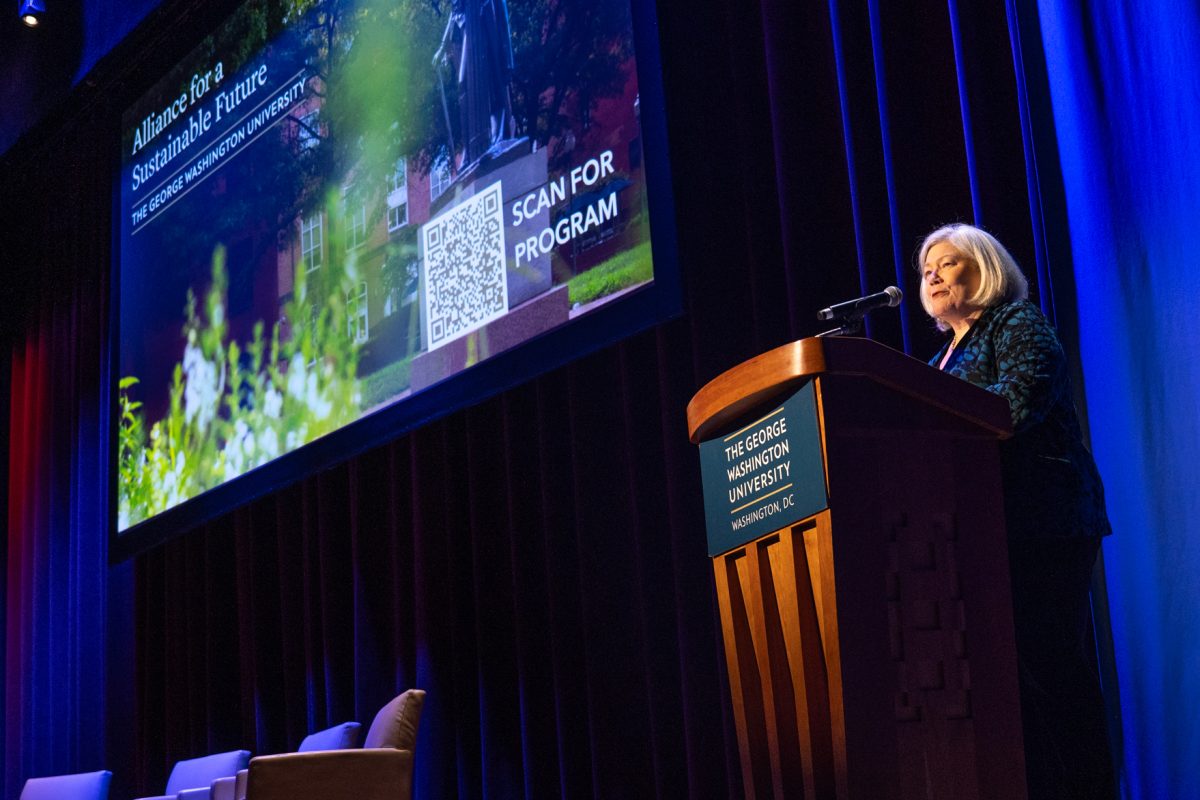Since the biology department moved from Bell Hall to the Science and Engineering Hall five years ago, professor Courtney Smith said she’s noticed “simple” improvements in her working conditions.
She said SEH’s more effective air conditioning system and the availability of pure deionized water in all of SEH’s sinks have made her research process faster and more efficient. The space available in the building has allowed her to keep an “animal housing room” in the basement, which she could not maintain at her former location.
“These are the standard aspects of science buildings that should be available, and this new building has made it so it’s true for GW,” she said.
Roughly five years after its official opening, Smith is one of several faculty members who said the hall – which houses more than 150 faculty and holds classes for thousands of students from four of GW’s ten schools – has enhanced student and faculty research opportunities. Officials said the building has helped students and faculty produce more competitive research, improved student satisfaction and led to more faculty from top-20 universities joining GW.
“As a result of our hiring, our research expenditures have increased dramatically, our faculty’s publication numbers are up, the number of research-active faculty at SEAS is up – everything is up,” Can Korman, the engineering school’s associate dean of research and graduate studies, said in an email.
Korman said the building – which cost $275 million to construct and opened in March 2015 – is the “key facility” in terms of infrastructure that supports GW’s scientific research. SEH encourages faculty research by providing more lab space and facilitating more cross-disciplinary work between researchers from different schools, he said.
Korman added that the building, which is home to faculty from the School of Engineering and Applied Science, the Columbian College of Arts and Sciences, the Milken Institute School of Public Health and the School of Medicine and Health Sciences, fosters a “collaborative education” for students because they can work side-by-side. He said he has seen students in engineering courses approach biology faculty to discuss their ideas for senior design projects.
The building has also improved the sense of community among STEM students and faculty, he said.
“Students like to spend time in the SEH common areas,” Korman said. “I see them gathered together studying all the time.”
Jason Zara, an associate professor of biomedical engineering, said the building’s creation has been a “game changer” for promoting his department’s research because it created enough space to house the entire department in one location. The biomedical engineering department was previously divided between Phillips and Staughton halls.
He said the building has allowed him to expand the range of his research – which focuses on using imaging technology to try to detect illnesses, according to his faculty profile – to include sea urchins and biofilms.
“The Science and Engineering Hall has greatly increased the cohesion of the department as we are now all in the same place,” he said in an email. “Having proximity to other researchers has greatly expanded the scope of my research and led to many more collaborative projects.”
Igor Efimov, the chair of the biomedical engineering department, said research opportunities for students have improved as a result of SEH’s design by physically integrating research and academics together. The building houses classrooms and labs side-by-side and separates them with clear glass panels.
“I think that the transparency of the floor design is really helpful because you can essentially see what other laboratories are working on,” he said.
He said many universities, like Washington University in St. Louis – where he previously worked – do not provide students with integrated environments where they can learn and research together, giving GW a competitive advantage in attracting students.
Efimov said in his own laboratory, where he studies therapy treatments for heart disease, he has hosted at least 12 undergraduate students to work with him each year. He said the spaces in SEH allow so many undergraduate students to work in his lab because they are conducive to working on research projects.
“I really appreciate having undergrads, but I also understand how transformative it is to have research experience,” Efimov said. “I remember myself when I was an undergrad I had an opportunity to do research – this really changed my life. It is very important.”
He added that the proximity to SEH’s research facilities are a consideration for prospective students, who he said are clearly “impressed” with the building itself when they visit.
Nirbhay Kumar, a professor in the department of global health, said that while SEH does provide a “pleasant” place to work, the building’s layout places large windows adjacent to lab space, which can present some obstacles to his research which uses materials vulnerable to light.
“We have chemicals that we work with that can be damaged by light, so we try and work with the shades down,” he said. “I would have designed [the building] in an entirely different way and had the office spaces put near the windows, and labs put into the interior of the building, so there would be less outside light coming into the lab.”
Kumar added that he is concerned about the building’s lack of security.
In June, a person stole camera equipment from SEH after breaking into an office in the building. Two months later, someone assaulted a GW Police Department officer after the officer arrived at the building to investigate reported loitering.
“One concern that people have always brought up is that in general the SEH building is open to anyone who can walk in, even the general public,” he said. “You have students studying in open spaces, and someone can just walk in and start doing something mischievous. I think building access has to be limited in this sense.”










